Interview: Renown Writer/Director John Caird On TWISTing Dickens' CHRISTMAS CAROL
Rubicon Theatre presents the World Premiere of ESTELLA SCROOGE: A CHRISTMAS CAROL WITH A TWIST

Rubicon Theatre presents the World Premiere of ESTELLA SCROOGE: A CHRISTMAS CAROL WITH A TWIST, which originated and was developed at Rubicon over two seasons in the company's Plays-in-Progress program. Co-writers' (director John Caird, composer Paul Gordon with Sam Caird) modern day take on Charles Dickens' beloved 1843 novella A Christmas Carol, combines characters and plot lines from Dicken's A Christmas Carol with those of Great Expectations, Little Dorrit, Bleak House, among others. Stellar cast of twenty-four includes: Betsy Wolfe as Estella Scrooge, Clifton Duncan as Phillip 'Pip' Nickleby, Lauren Patten as Dawkins, Patrick Page as Mr. Merdle, Carolee Carmello as Marla Havisham, Danny Burstein as Ebenezer Scrooge. ESTELLA SCROOGE is produced by Streaming Musicals, in association with Tony Award-Winner Michael Jackowitz of WitzEnd Productions, Michael Alden and David Bryant.
The much lauded/awarded John managed to take a break from his multi-tasking in London to answer a few of my queries.
Thank you for taking the time for this interview. John!
LITTLE MISS SCROOGE had its first workshop production at Rubicon Theatre in Ventura in 2013. Could you chart the creation process of LITTLE MISS SCROOGE from 2013 to its world premiere theatre/film/animation form, under its current title ESTELLA SCROOGE: A CHRISTMAS CAROL WITH A TWIST, today?
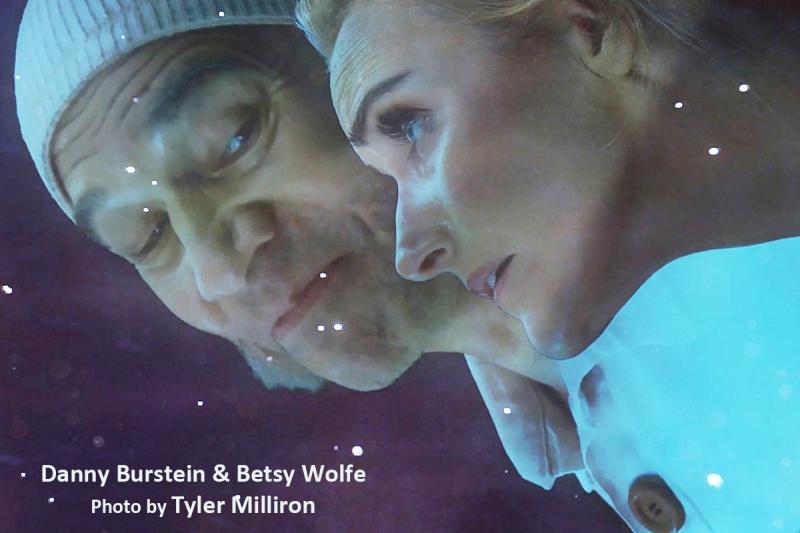 Giving birth to the show at Rubicon was very special for all of us. It's a very nurturing environment for developing new works. We were all very enthused by the progress. But afterwards, Paul and I were involved in other projects and weren't able to do much with it for a few years. And because the show is seasonal, the timing of it is quite particular. Most Broadway and West End musicals are budgeted based on an unlimited run, so one has to be quite strategic about a holiday show. We had finally decided to produce the show Off-Broadway and were preparing when we suddenly had to pull the plug because of COVID-19. Then, rather out of the blue, Tom Polum and Stacia Fernandez of Streaming Musicals, producer Michael Jackowitz of WitzEnd, and co-creator Paul Gordon and I had the same idea at the same time - to produce a streaming version of the show in a safe setting against a green screen. We felt that the subject matter and the fantastical nature of the story would lend itself to a unique melding of different genres. The show is a hybrid of theatre, film and animation. As to the original title, it had come from the idea that she had been abandoned as a small (little) child. But I had never really liked it, and felt it was more than a bit patronizing - out-of-step, really. We went through a number of options, and came to ESTELLA SCROOGE: A CHRISTMAS CAROL WITH A TWIST, which brings in the two major story lines and lets audiences know there will be other surprises as well.
Giving birth to the show at Rubicon was very special for all of us. It's a very nurturing environment for developing new works. We were all very enthused by the progress. But afterwards, Paul and I were involved in other projects and weren't able to do much with it for a few years. And because the show is seasonal, the timing of it is quite particular. Most Broadway and West End musicals are budgeted based on an unlimited run, so one has to be quite strategic about a holiday show. We had finally decided to produce the show Off-Broadway and were preparing when we suddenly had to pull the plug because of COVID-19. Then, rather out of the blue, Tom Polum and Stacia Fernandez of Streaming Musicals, producer Michael Jackowitz of WitzEnd, and co-creator Paul Gordon and I had the same idea at the same time - to produce a streaming version of the show in a safe setting against a green screen. We felt that the subject matter and the fantastical nature of the story would lend itself to a unique melding of different genres. The show is a hybrid of theatre, film and animation. As to the original title, it had come from the idea that she had been abandoned as a small (little) child. But I had never really liked it, and felt it was more than a bit patronizing - out-of-step, really. We went through a number of options, and came to ESTELLA SCROOGE: A CHRISTMAS CAROL WITH A TWIST, which brings in the two major story lines and lets audiences know there will be other surprises as well.
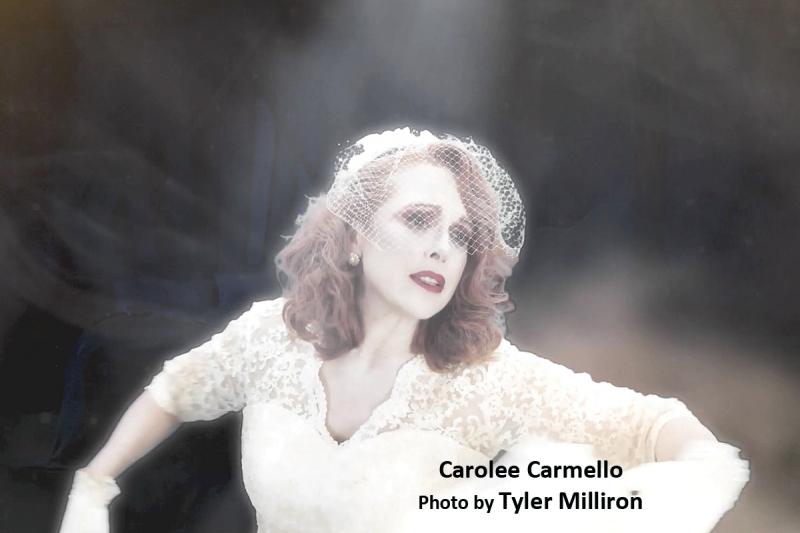 What lightbulb moment sparked you to combine other Charles Dickens' works with A Christmas Carol?
What lightbulb moment sparked you to combine other Charles Dickens' works with A Christmas Carol?
I'd actually been working writing an opera libretto for André Previn based on Great Expectations that I was going to call Estella. Ultimately, André and I never quite found the time to finish it, but I couldn't get the idea of writing about the character out of my head. I find Estella Havisham a fascinating Dickensian mystery.
With this production, Paul had initially mapped out a contemporary version of A Christmas Carol. And when we started working, it occurred to me that we could clash together the two novels of A Christmas Carol and Great Expectations and make a female character in the Scrooge story that Paul had created. The link between Scrooge and Havisham is so clear. Dickens had such a keen eye for the hardhearted amongst us. He wrote hardhearted people very well - I think because he thought it was the greatest sin one could be guilty of. Certainly, Ebenezer Scrooge and Estella Havisham are two examples of people whose hearts have been hardened by nature, or the way they've lived their lives, or by their personal circumstances. And it just went on from there. A lot of the connections started to work. The ghost of Marley became Miss Havisham from Great Expectations and so on. Then it struck Paul and me that we should open the door to the other characters as well. We began to mix and match all the great Dickensian characters.
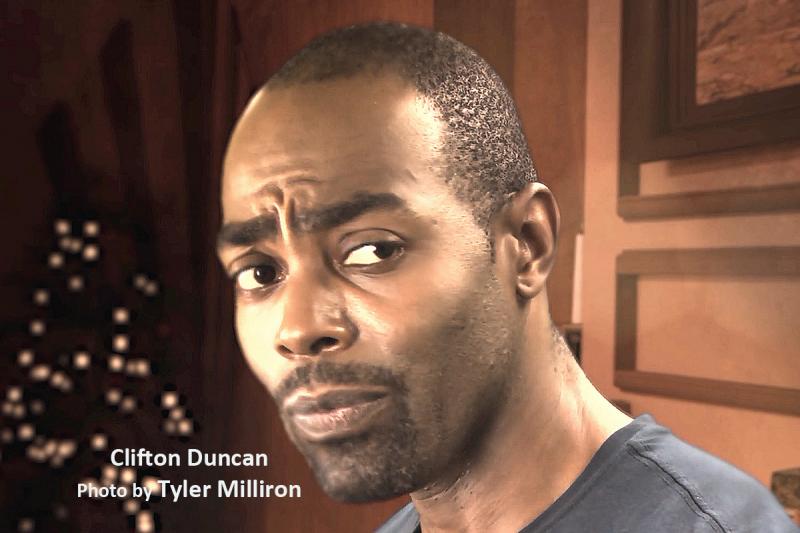 Did you assemble your production team from creatives you've previously worked with, like Paul Gordon?
Did you assemble your production team from creatives you've previously worked with, like Paul Gordon?
It was really the other way 'round. Paul originated the process. He wrote the first draft of the script and sent it to me. My son Sam and I then took Paul's rough draft and began to build on it. We created the idea of a charity hospital in another town and broadened it to include more of the Dickensian encounters. Most of the rest of the team are completely new to us. Producers Michael Jackowitz and Kevin Surace gave us a demonstration of how it could be re-imagined on green screen. After we'd agreed, it was about assembling individuals whose expertise was in these particular areas.
In these crazy pandemic times, how did you get together with your creatives and your actors? Lots of online rehearsing?
Because of the safety protocols, it was essential that we use actors from New York, where we were shooting. Only a few who were based in New York from the prior 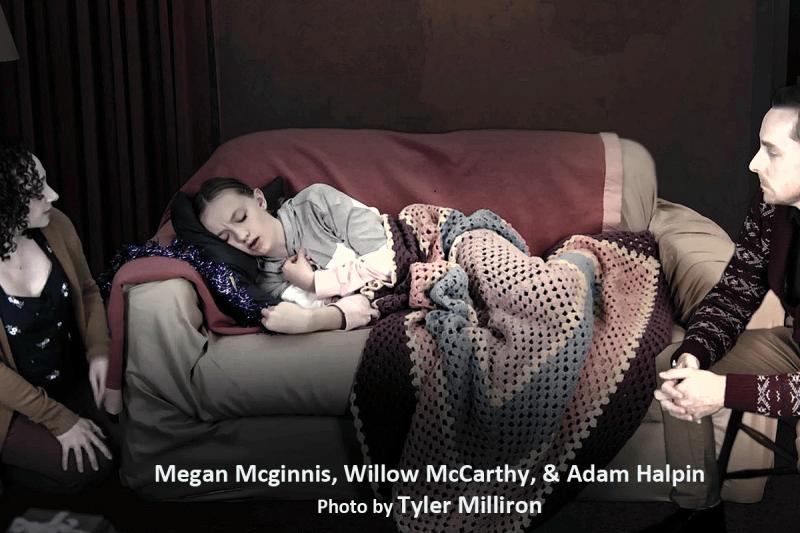 workshop were therefore able to be a part. So most of the actors had not met in person. (That's true even now.) We cast them online. We rehearsed via Zoom with Paul and everyone in their various homes and me in London, discussing and reading the show together so that they would have an understanding of the rhythm of the scenes. It gave them a sense of who they were talking to in their mind's eye as we went into the shoot. My Director of Photography Tyler Milliron or I then played the parts when necessary. Because of COVID, we were limited to only two other people in the green screen room at any time, with occasional exceptions for make-up and costumes who were heavily masked for the more fantastical characters, In the case of four of our actors, we were lucky enough to get people who were living together and could perform opposite each other live (Megan McGinnis and Adam Halpin - our Cratchits, and two of our dancers Samuel Lee and Michael McBride).
workshop were therefore able to be a part. So most of the actors had not met in person. (That's true even now.) We cast them online. We rehearsed via Zoom with Paul and everyone in their various homes and me in London, discussing and reading the show together so that they would have an understanding of the rhythm of the scenes. It gave them a sense of who they were talking to in their mind's eye as we went into the shoot. My Director of Photography Tyler Milliron or I then played the parts when necessary. Because of COVID, we were limited to only two other people in the green screen room at any time, with occasional exceptions for make-up and costumes who were heavily masked for the more fantastical characters, In the case of four of our actors, we were lucky enough to get people who were living together and could perform opposite each other live (Megan McGinnis and Adam Halpin - our Cratchits, and two of our dancers Samuel Lee and Michael McBride).
You've already experienced your directed stage productions being captured on film (NICHOLAS NICKLEBY, AS YOU LIKE IT, THE BEGGAR'S OPERA, TWIN SPIRITS). As the theatrical director, do you collaborate with the film's director to ensure your directorial vision is intact?
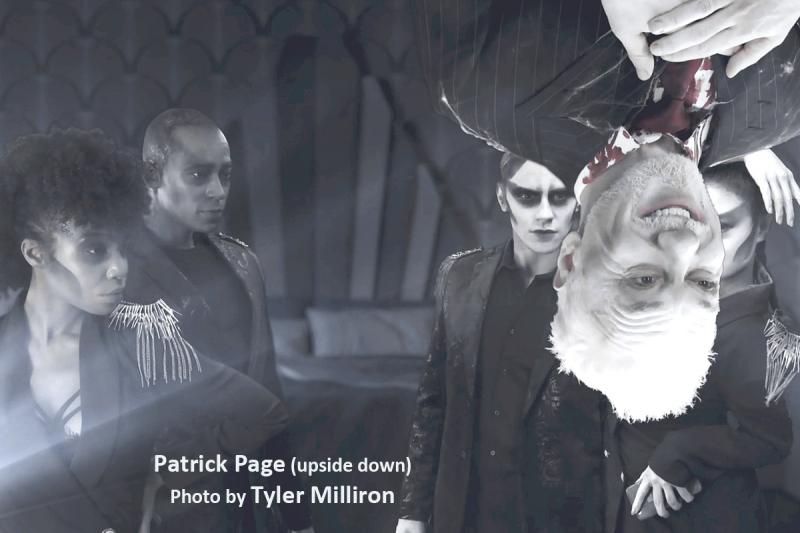 In this instance, I hope so, because I am also the film's director. I was collaborating like mad with myself in the process. Having said that, I was very, very lucky to have Tyler Milliron who is the owner/director of this green screen studio as Director of Photography. He was my eyes and ears in the room and was present every second. In no time, Tyler was thinking like me and watching like me and hearing like me. He was a wonderful collaborator and we so enjoyed working together.
In this instance, I hope so, because I am also the film's director. I was collaborating like mad with myself in the process. Having said that, I was very, very lucky to have Tyler Milliron who is the owner/director of this green screen studio as Director of Photography. He was my eyes and ears in the room and was present every second. In no time, Tyler was thinking like me and watching like me and hearing like me. He was a wonderful collaborator and we so enjoyed working together.
Your most impressive resume's full of lauded productions and acting giants must have theatre newbies in awe of you. Has any particular actor/actress ever had you tongue-tied or take a moment to catch your breath?
If you are in a rehearsal room with an actor, there may be a few awkward moments at the beginning, but you become like children playing together on a playground. It's unglamorous really - not like walking a red carpet. It's lovely. I find there's great joy and connection in creating together.
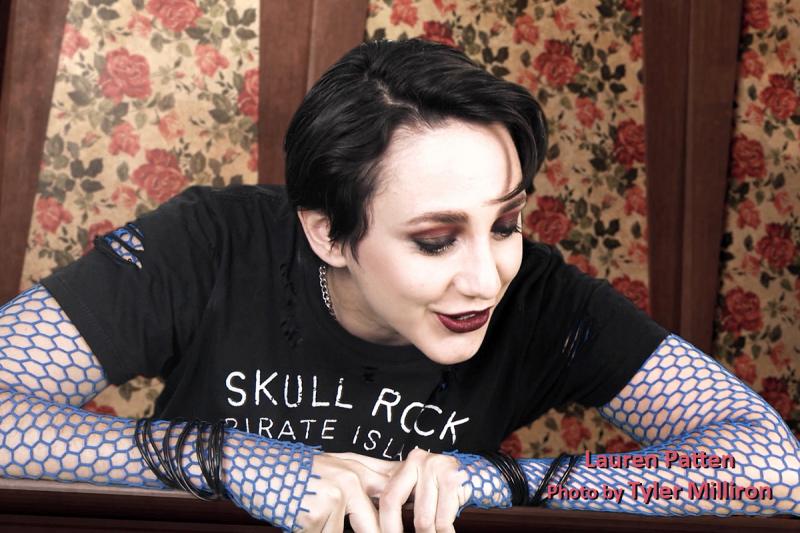 You've directed theatre all over the world. Do you adapt a show you've directed to the various cultures and languages in different countries?
You've directed theatre all over the world. Do you adapt a show you've directed to the various cultures and languages in different countries?
Yes, you have to be very sensitive to cultural differences to do shows in various countries. All the words having to be translated into a foreign language and that implies a different set of values. There are deep-seated language differences in different countries. In Japanese, it takes three times longer to say anything than it does in English, so you have to cut the text down so the show doesn't last nine hours. Some languages are easier than others - German and Swedish, for example, are easier than Slavic languages or Eastern languages. You have to find ways of explaining if you're doing a show written in the West and are doing it in the East. For example, when I did LES MISÉRABLES in Tokyo, the actors there have no concept of the idea of political revolution. Also, LES MISÉRABLES is very deeply concerned with Biblical issues - belief in the God of the Old Testament by Javert and of the New Testament by Valjean. Christianity does exist in Japan, but not in the same way as in America. It was completely new to most of them. But usually, once you've explained the historical social and political background to a group of actors, they pull it into their performances in a way that makes their characters quite natural.
 You have a city that you've worked in and a type of entertainment that most directors have not - Las Vegas and a magic show. Can you tell us how you came to write and team up with Siegfried & Roy in the late 1980s?
You have a city that you've worked in and a type of entertainment that most directors have not - Las Vegas and a magic show. Can you tell us how you came to write and team up with Siegfried & Roy in the late 1980s?
John Napier, the designer of CATS and LES MISÉRABLES and many others is a great friend of mine. Siegfried & Roy saw a show of his called TIME starring a very well-known English pop star, Dave Clark. TIME was a big hit for a year or two in London. It was very technologically clever in terms of its visual effects. Siegfried & Roy went to see it and fell in love with John's talents as a designer. Up until then, the shows they had done were mostly lounge acts, and they wanted to do a show with complex theatrical values and amazing visual elements. They went to John Napier to design a series of images. John brought me on board to write a coherent narrative and to make a mad Wagnerian story for Siegfried & Roy to star in. And then they invited me to direct, which I did.
You founded the Mustardseed Arts and Educational Trust in 1987, to raise funds for artistic and educational projects all around the world. What accomplishment of this charity are you most proud of?
 I'm easily most proud of the school that I'm building in Uganda at the moment. The Mustardseed Junior School in the village of Sentema. You can go to mustardseedschools.com and find out all about it. You can even donate to it on that very site if the mood takes you. We have five videos on the site explaining how the school is being built. It's being eco-sustainably built in a biodiverse environment.
I'm easily most proud of the school that I'm building in Uganda at the moment. The Mustardseed Junior School in the village of Sentema. You can go to mustardseedschools.com and find out all about it. You can even donate to it on that very site if the mood takes you. We have five videos on the site explaining how the school is being built. It's being eco-sustainably built in a biodiverse environment.
What classic play, that you've never done would you like to tackle next?
I find this difficult to answer because I don't really have a wish list of plays I'd like to direct. I've never done KING LEAR, so I suppose I would like to do that that one. I love redoing plays I've done before. The great, deep, beautiful plays of Shakespeare never grow old. I'll never tire of doing HAMLET. Or TWELFTH NIGHT.
How much do you change your directorial mind-set in directing a classic vs. a world premiere or a musical?
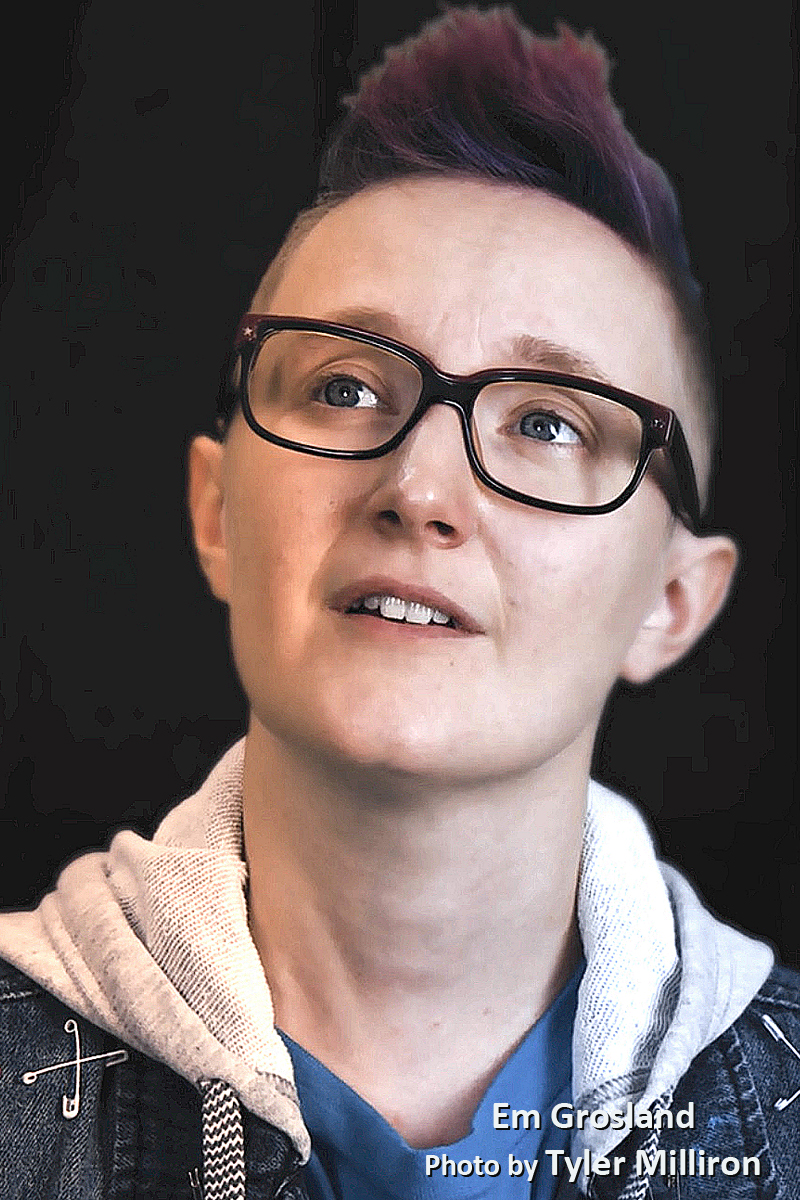 I suppose the most important difference is that in directing a classic, you can't phone the author. I often try to phone Shakespeare or Puccini. I wish I could say to Puccini, "Can we please cut that stupid aria in Act II?" Or phone Shakespeare to say, "You realize there are four or five scenes in ANTONY AND CLEOPATRA you don't really need?" One would long to have a conversation with Shakespeare about why that is and why one might want to do it in a different way. These great playwrights and composers were working to deadlines, just as we are today. They had to finish the play, get on to the next one. So it's daft to think of these pieces of work as being untouchable. There must always be some leeway to make sense of them in a modern context. But, of course, with a world premiere, you're redefining the context every day. You go into rehearsal with the wonderful luxury of having the original collaborators with you in the room. The director has to have great authority and great humility - you can be told by the playwright or the composer, "That's not what I mean. You're misunderstanding what I'm trying to achieve." One has got to be more collaborative with premieres.
I suppose the most important difference is that in directing a classic, you can't phone the author. I often try to phone Shakespeare or Puccini. I wish I could say to Puccini, "Can we please cut that stupid aria in Act II?" Or phone Shakespeare to say, "You realize there are four or five scenes in ANTONY AND CLEOPATRA you don't really need?" One would long to have a conversation with Shakespeare about why that is and why one might want to do it in a different way. These great playwrights and composers were working to deadlines, just as we are today. They had to finish the play, get on to the next one. So it's daft to think of these pieces of work as being untouchable. There must always be some leeway to make sense of them in a modern context. But, of course, with a world premiere, you're redefining the context every day. You go into rehearsal with the wonderful luxury of having the original collaborators with you in the room. The director has to have great authority and great humility - you can be told by the playwright or the composer, "That's not what I mean. You're misunderstanding what I'm trying to achieve." One has got to be more collaborative with premieres.
What's in the foreseeable future for John Caird? Another TWIN SPIRITS production? Another original you're writing?
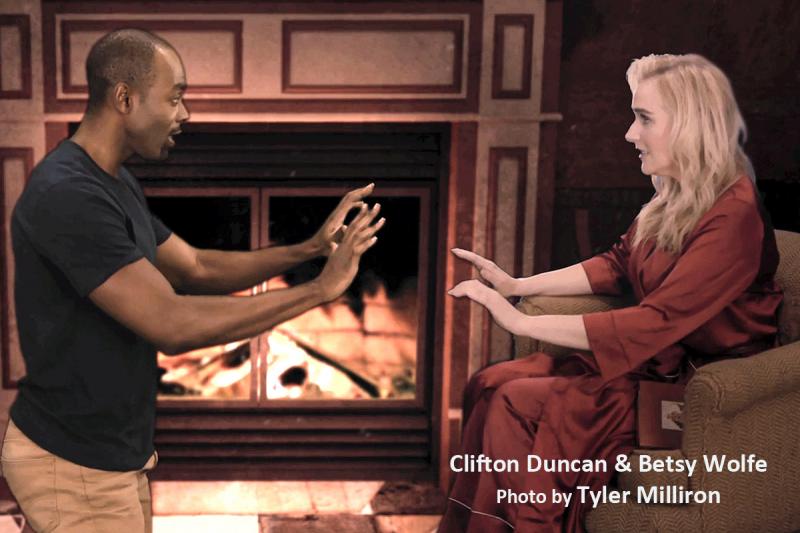 TWIN SPIRITS is a happy accident that happened because of my affection for Sting and Trudy and wanting to do something together. I'm writing a new opera with Tarik O'Regan in San Francisco. I'm writing another big theatrical entertainment for Toho in Tokyo that's not announced yet. And Paul (Gordon) and I are talking about writing a new musical together. We're getting started as I speak. Always more to do. Always more to achieve.
TWIN SPIRITS is a happy accident that happened because of my affection for Sting and Trudy and wanting to do something together. I'm writing a new opera with Tarik O'Regan in San Francisco. I'm writing another big theatrical entertainment for Toho in Tokyo that's not announced yet. And Paul (Gordon) and I are talking about writing a new musical together. We're getting started as I speak. Always more to do. Always more to achieve.
Thank you again, John! I look forward to viewing and meeting ESTELLA online soon.
For tickets for this world premiere of ESTELLA SCROOGE: A CHRISTMAS CAROL WITH A TWIST (streaming through January 3, 2021); log onto to www.rubicontheatre.org or phone (805) 667-2900.
Comments
Videos

